To my pleasant surprise, three months later, I got a letter from Colorado Parks and Wildlife congratulating me on winning the essay contest. I hadn't given them my E-mail, so I didn't know right away that I had somehow won, against all odds. CPW chose six youth hunters in total, including me. In total, over 1,000 kids submitted essays. I basically had less than a 1 in 1,000 chance of winning, and yet I still pulled it off.
Uncle Courtney agreed to lend me his 20 gauge shotgun for the trip. I spent a few hours with my grandpa one evening learning how to shoot the shotgun. We didn't aim at any ground targets, but instead hung out in the skeet yard at Cherry Creek State Park, shooting clay pigeons. I figured if I could hit most of the moving airborne targets, then I could hit a stationary bird in front of me just fine. Plus, who wouldn't spend a few hours at a quiet gun range shooting a few boxes worth of shells and clays with an antique shotgun?
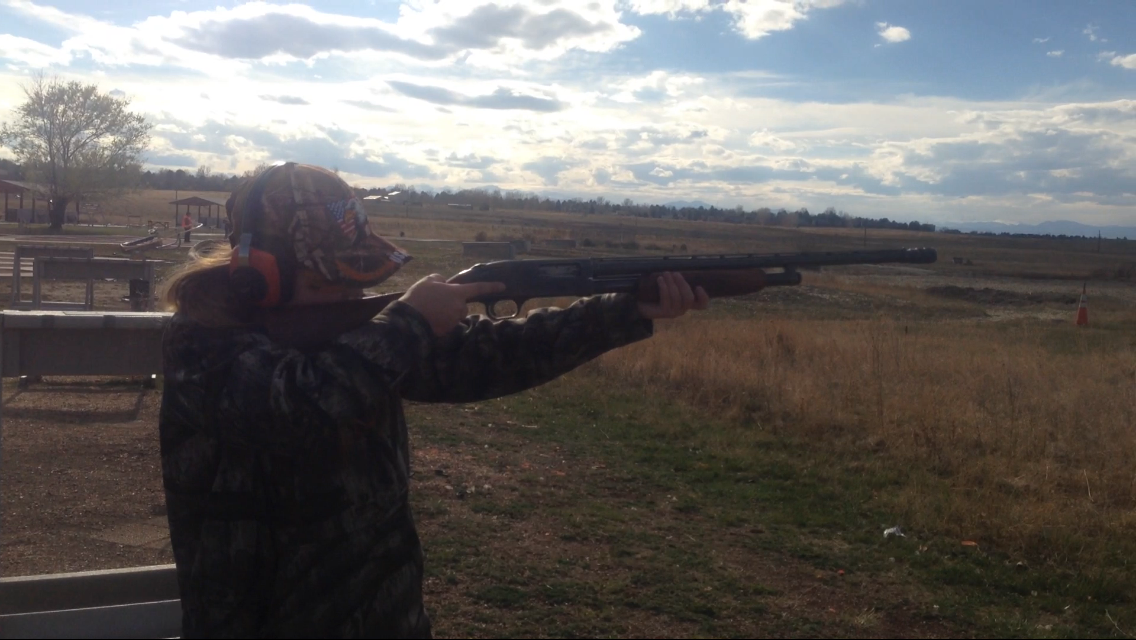
When Friday of the hunting weekend arrived, I packed my crap for the trip into the back of my grandparents' SUV, and we drove for nearly five hours from my home in Littleton, northwest to Meeker. I got to skip school that day, because I had to be at the CPW office for orientation in the mid afternoon, where I'd get to meet the other five youth hunters, meet my guide, learn about wild turkeys, fill out some paperwork, then show off my skills at the shooting range. Then, if we still had some daylight left, my guide would take us to the hunting grounds and show us around.
The weather for the trip wasn't forecasted to be very nice unfortunately. I was pretty nervous about it. I don't do well in bad weather, especially cold and windy weather. I don't have the best blood circulation to stay warm, and my lungs are less than capable of tolerating a few dust particles. But my grandparents prepared for this weather in advance, and bought us camouflage bandannas, as well as plenty of warm, windproof, waterproof, thorn-proof camouflage clothing, and sunglasses. My first lesson in hunting was to be prepared for anything. And to be honest, this was a pretty easy rule to follow. Only I forgot my anxiety medication for the trip. Damn it!
When we arrived to the CPW office, I was pretty surprised by just how many people were there. The tiny little office, which consisted of a main room with a few full-mount taxidermy statues of some local big game, and a smaller conference room, was packed with people. Most of them were CPW wildlife officers, and the rest were kids and their mom or dad. In my case, I had my grandparents with me.
Class began as soon as everyone sat down. A CPW officer gave everyone paperwork to fill out, as well as their turkey tag to sign. And, to top it all off, they gave each hunter a gift package, which included a turkey slate call, a wild game magazine with a wild tom (male) turkey on the cover, a pamphlet all about turkeys, a pocket survival guide, and a stack of about 20 cards intended to write down the information and signature of any kind land owner who'd gladly let me hunt on their private land.
Once everyone filled out the paperwork and handed it back to the CPW officer, another CPW officer stood up and introduced himself. I forget his name, but in a booming voice, he briefly lectured us about wild turkeys, asked questions to refresh our memories of the cardinal rules of hunting, took even more questions, and then started a video on a small TV, which explained in detail the language, behavior, and lifestyle of Colorado's wild turkeys. The episode also taught us how to hunt the turkeys. Basically, the best way to hunt those things is to hurry up, sit down, stay still, shut up, and wait.
Wild turkeys are actually pretty complex animals. They have incredible hearing and eyesight, and are especially sensitive to bright colors. If they see anything that is white, blue, orange, pink, etc, they will assume it's a threat and get the hell out of dodge! Thankfully, turkeys don't have a sense of smell. If they did, hunting them would be almost impossible. But turkeys are pretty dumb compared to a lot of animals out there. Alpha tom turkeys will attack turkey decoys set out by hunters, which is pretty entertaining to watch, just as long as you stay low and silent in the blind.
Sometimes, if a hunter shoots a turkey in a rafter (group) of turkeys, the other turkeys will just stand there and watch as the chosen one flaps and twitches until the nerves run out of energy. When a turkey gets shot, they flap and twitch for about a quarter to a half a minute after, not because they are alive. In fact, they die instantly when the shotgun fires. But they flap because their nerves freak out when it dies. Basically, the nerves are pre-programmed to do certain movements, such as close the turkey's talons when it goes to sleep, but they still need a leader (the brain) to call the shots. If the nerves lose their leader, they literally lose their mind, as I'm sure any decent company would if their main boss died suddenly.
Also, just FYI (I didn't know this until I attended the orientation a day before the hunt), wild turkeys can fly! They are certainly not very graceful at it. But because they roost in trees for the night, they have to be able to fly at least to the top of the trees. In fact, their instinct to roost in trees is so strong, that hen turkeys will leave her chicks behind to fend for themselves on the ground. Luckily, wild turkeys breed and lay enough eggs to compensate for the chicks lost to predators. In fact, hens can lay up to 17 fertile eggs at a time!
Still, wild turkeys would much rather jump or run from place to place rather than pick up their fat, fluffy bodies off the ground for any longer than a few seconds. They can fly because unlike domestic turkeys, they have almost no fat on their bodies. They rely on their feathers to keep them warm, which are very effective at keeping the heat in and the water out. However, all of that fluff is not very aerodynamic, especially if the turkey tries flying in any direction other than against the wind.
Finally, sometimes tom turkeys don't have beards, but hens do. People commonly believe that only tom turkeys have beards. Apparently, that isn't the case. While most toms do have beards, and most hens don't, there are enough hermaphordite wildlife running around, that most tags either have "bearded" or "not bearded", rather than "tom" and "hen". Same goes for most deer species except for pronghorn. You either get a tag that says "antlered", or you get a tag that says "not antlered". Pronghorn are an exception to the rule, because they're one of the few game animals that have enough male/female characteristics besides their horns, that having a pronghorn doe that looks just like a buck is pretty much impossible.
After learning all about wild turkeys, we were introduced to our guides. I ended up being paired up with an older CPW officer called Tom. Tom was probably the most experienced guide out of everyone else, and was more than happy to take me out on my first turkey hunt. Turns out, he was preparing several weeks before. He was testing out decoys, blinds, and counting the turkeys wandering around on the 50,000 acres of hunting land he lived on and managed. He also worked on his side-by-side so it was ready to take me around the property. Tom knew about me well in advance, and knew of my health issues, so he was more than prepared by the time I met him.
He was very kind and helpful, though Tom was also very blunt. He wasn't afraid to tell us the truth, no matter how cold and hard it was. This included reassuring me that the weather was gonna be much worse and more intense than the weather was on that Friday, so I better dress warm and heavy, and be prepared with my pocket survival pamphlet in case I had to build myself a shelter out of branches and soil. Also, predator activity was pretty high where we were hunting, so I better have a decent plan of survival in case we encountered a hungry black bear boar (male), fresh out of hibernation. However, at the same time, Tom promised to never be further than arms reach from me for the whole hunt, so I wasn't gonna have to fend off any bears alone.
Finally, we were told by a leading CPW officer to drive to a gun range not far away, and meet our guides and the other CPW officers there. CPW had shotguns for us, but were perfectly happy with people using their own shotguns. My guide took one quick look at the antique 20 gauge I brought along, and decided that I'd have an easier time shooting his shotgun instead. Unlike my shotgun, which used an old, worn-down bead sight and was another 5 pounds heavier, my guide's shotgun had glow sights and was built as lightly as possible. Basically, the sight was made out of three plastic parts. There were two red plastic cylinders on either side of the barrel, and on the top of the muzzle there was a single plastic green cylinder. The sights didn't need batteries to glow. They just captured any and all light and reflected it throughout the plastic to make the illusion that the sights were glowing. When the green sight was perfectly in between the two red sights, that's when the shotgun is aligned perfectly and ready to be fired.
Down at the shooting range, I positioned my guide's shotgun on a tripod uncle Courtney provided for me. He said that would make it much easier to aim and shoot. Ahead of us was a target with a turkey head printed on it. If I had a decent cluster of pellets anywhere on the head or neck, even if I missed the black box (which was the bullseye)on the center of the target, I had myself Easter dinner!
But there were things that made it harder to shoot than I was used to. The kids around me were about as excited as squirrels at a rave, and I could just see one of those trigger-happy kids forgetting The Cardinal Rule, and shooting someone in the leg or worse. On top of that, the weather was getting to be exponentially worse as dark clouds rolled above us, and the wind blew hard to the right, which meant I'd have a harder time hitting my target.
All I wanted was to get away, and retreat to the safety and shelter of the warm hotel room with some warm food and hot chocolate. I guess that whole experience at the range was God's way of making sure I knew exactly what I was getting myself into. Hunting is full of anxiety, surprises, risks, and bad weather. I just had to bury my face in my camo bandanna, aim for the turkey's neck, not forgetting to take wind and distance into consideration, ignore everything else, and shoot to kill.
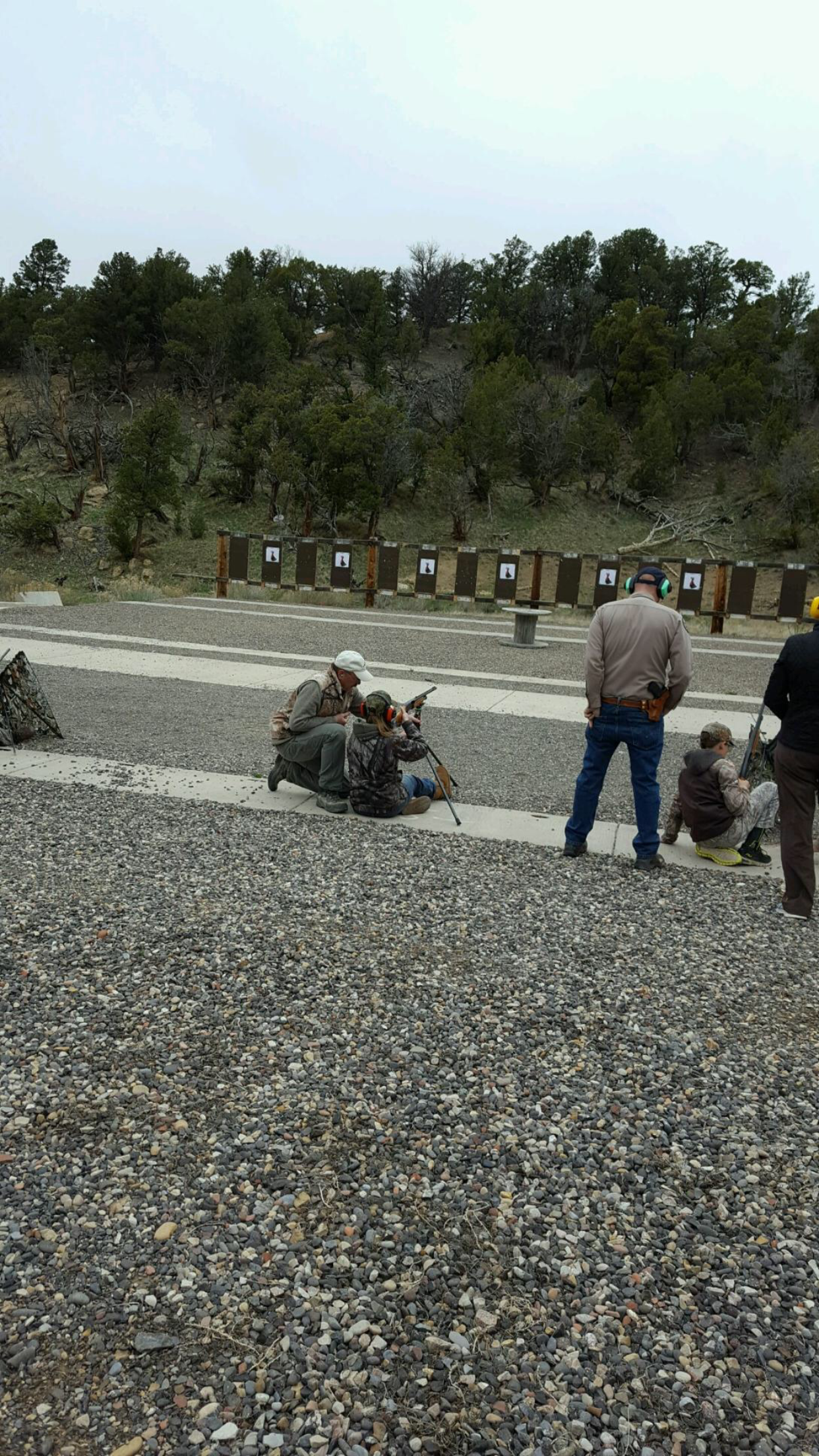
I shot the shotgun just a couple times, delivering a fatal shot to the turkey head target both times, although most of the pellets were carried to the right with the gale. After that, I decided I had enough. The kids around me were getting more and more twitchy and excited each time the officers instructed them to shoot, and I was getting cold.
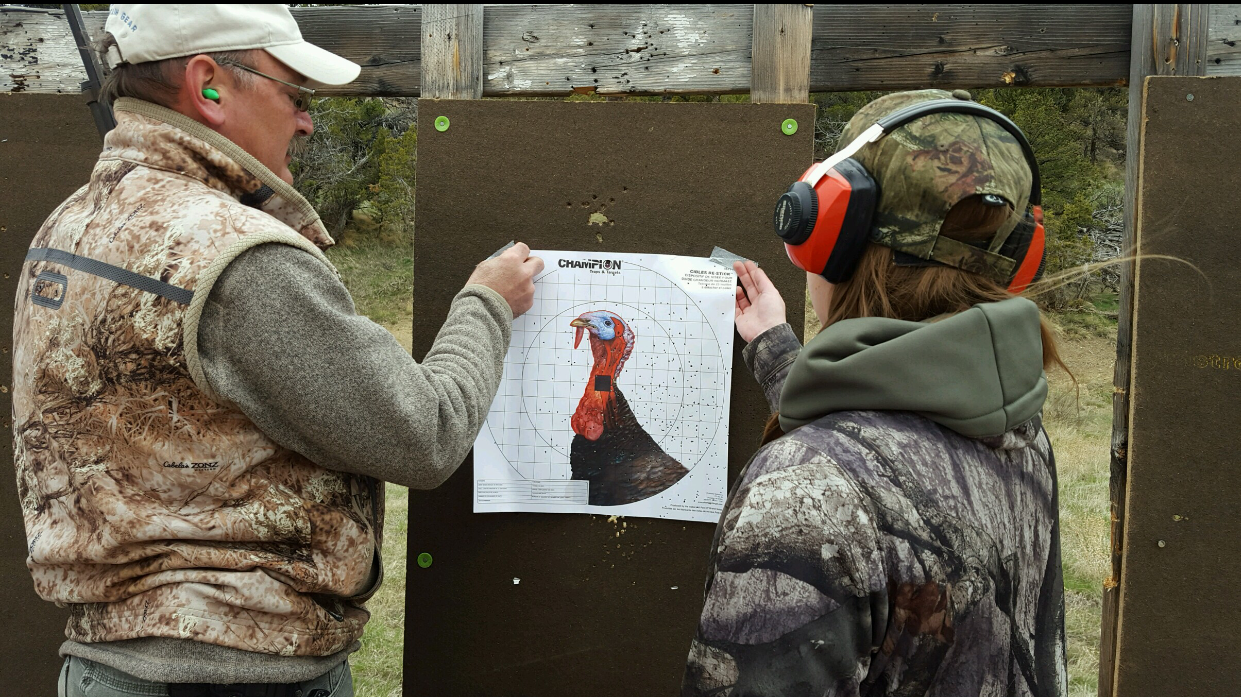
Before I left, I went with everyone else to gather our targets. One kid didn't hold his target tight enough, and it blew away. The kid then thought it was a good idea to try and jump the barbed wire fence separating the gun range from a grassy valley, against his father's suggestion to just go though the gate that was standing open several feet away. The kid jumped, almost cleared the fence, but ended up catching the end of his pant leg on the wire. The kid fell on his face, but was so determined to fetch his target (which was bouncing off further down the valley with some speed), that he just pulled his leg away, got up, and wiped dirt off his face as he sprinted to catch his target. I don't know why that memory is so vivid, but I guess it was a warning to not let buck fever get in the way of my logic and listening skills.
Before I could finally retire to the warmth and safety of the hotel room, Tom offered to take us in his truck to show us around just some of the hunting grounds. The hunting grounds were off the main highway, somewhere between Meeker and Rifle.
They were deep in the mountains, which were blanketed in green, brown, and golden stubby grass on top of reddish grey and brown soil. Barren aspens, dark green ponderosa pines, and silvery blue spruces towered over the rest of the wilderness, making me feel small and weak compared to the rest of God's creation. Willows grew along creeks and rivers, decorating the valleys in fiery reds, oranges, and yellows, though their roots always faded to a smokey, purplish grey. The land was also dotted with clusters of red cedar shrubs growing along steep mountainsides, which had twisted, reddish brown and dusty silver trunks, topped with a thick layer of forest green needles. They looked fluffy and soft from a distance, but looks are deceiving. Finally, everywhere else was topped with twiggy, purple and grey, barren bushes, as well as chocolate brown brambles, and these very annoying patches of burs that stick like velcro, but are about as spiky as a porcupine. In the summer, those burs are actually bright magenta flowers, but they die and dry out to be the most painful plant to sit on besides a cactus. They're fun to flick at your friends when they aren't paying attention, but they're not so fun when they stick to you.
It was the ugliest time of the year, yet the wilderness was already full of beauty and awe.
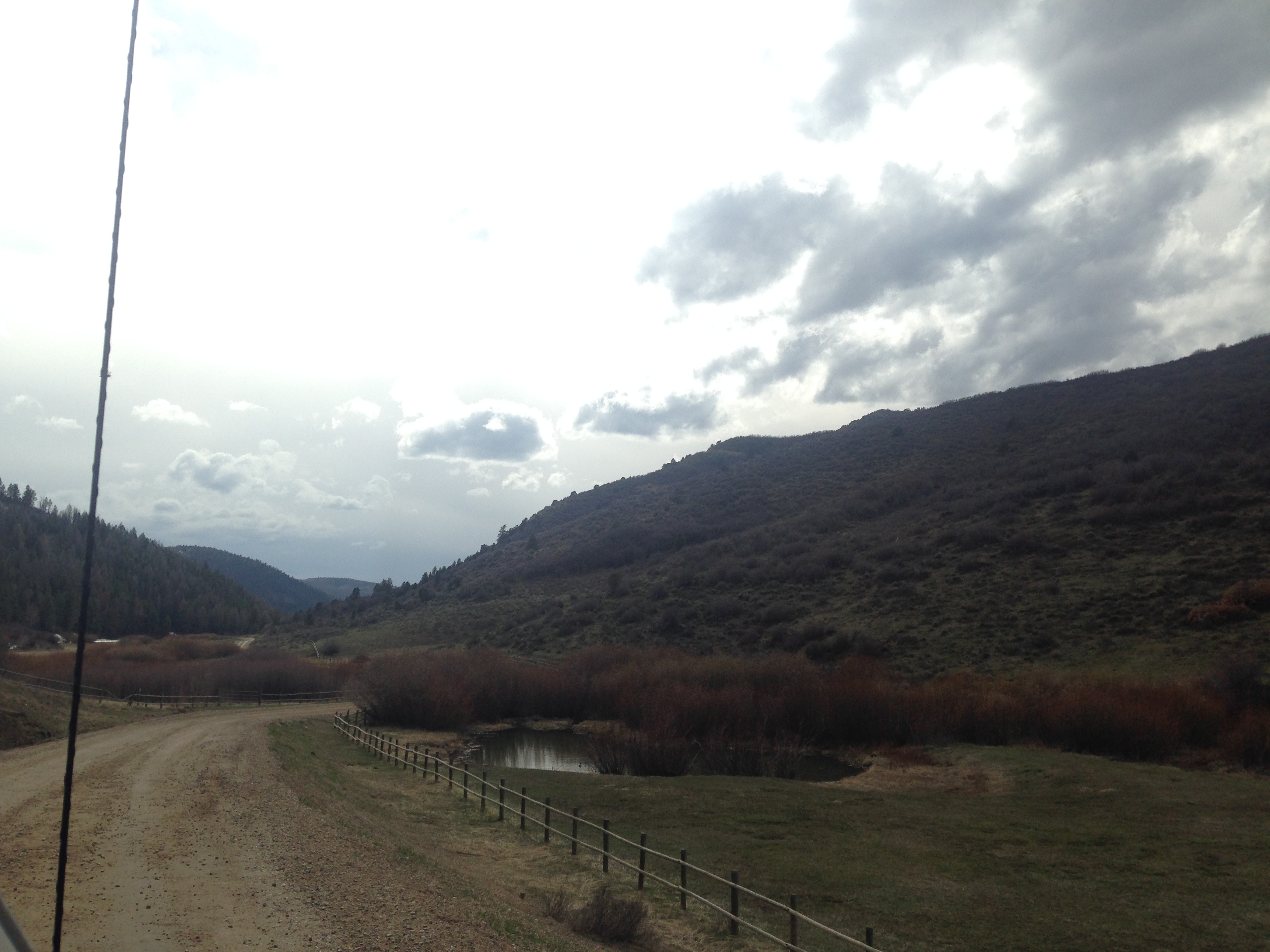
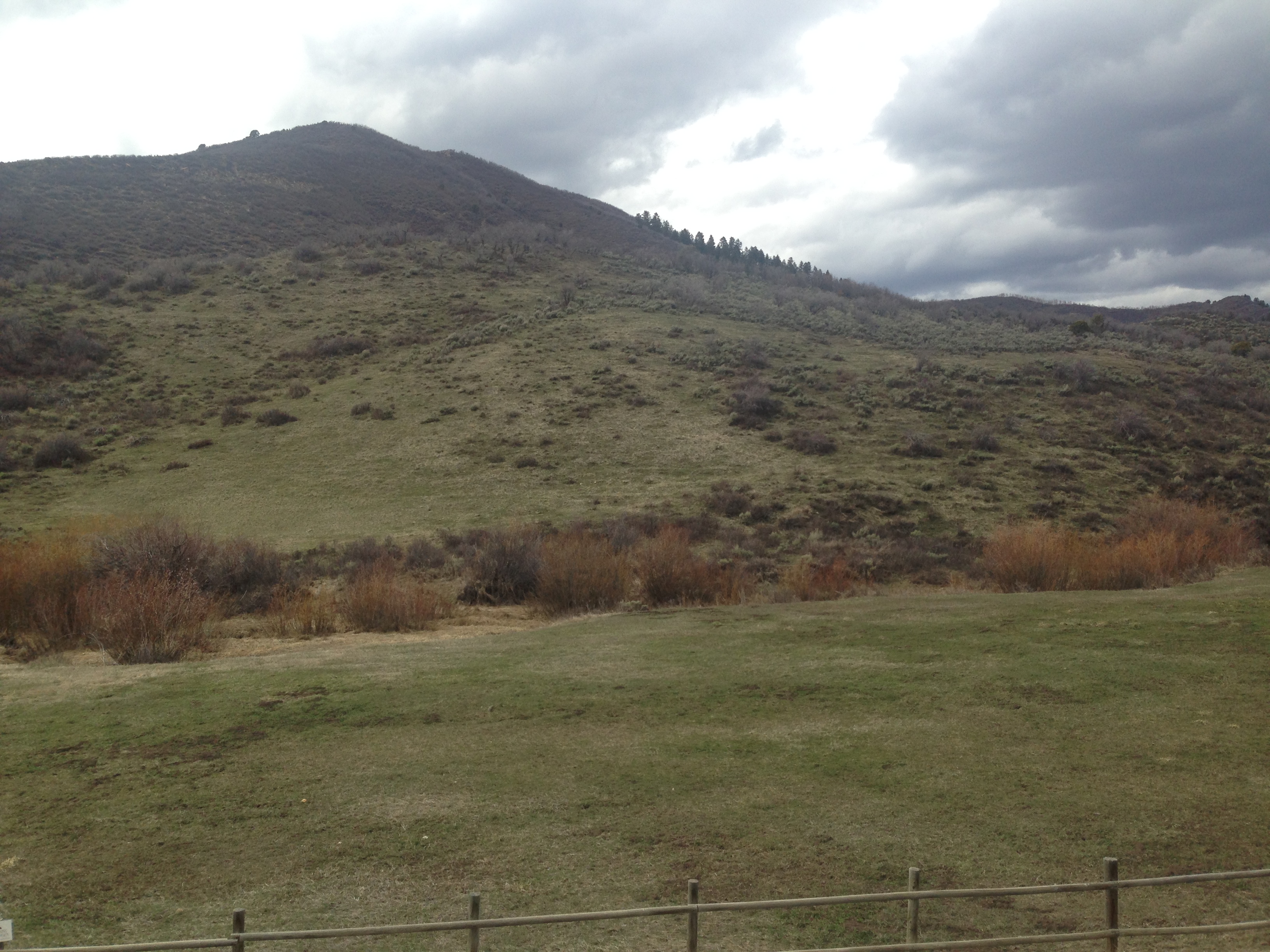
As Tom slowly rounded a bend, he stopped and rolled down his window. There, strutting around in a boggy floodplain, a tom turkey was showing himself off to a rafter of hens. None of the hens seemed very interested in him though. They were busy pecking at the ground. But, the tom kept on strutting around, puffed up and ready for a mate. As the tom turkey did this, Tom, my hunting guide, laid on the truck horn a few times. Rather than running away, the tom turkey stretched out his neck and gobbled back. My guide did it again, and again the tom turkey gobbled back. Apparently, when turkeys hear loud noises such as car horns, they will gobble at it rather than run. I'm not exactly sure why they do this, but it's fun to watch to say the least.
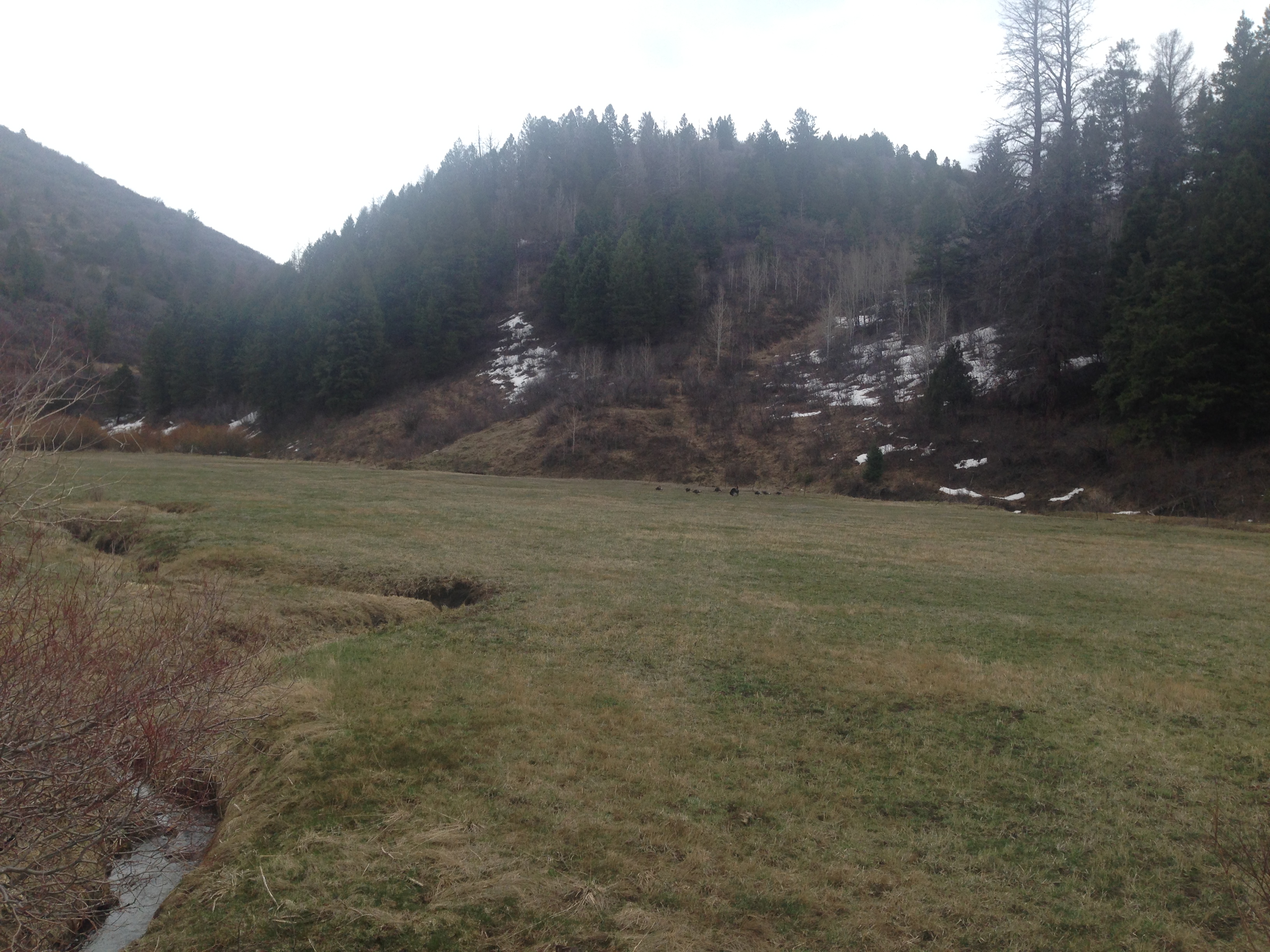
After we gawked at the turkeys for a few more moments, Tom drove us around some more, just to show off a few more acres of his property. Everywhere we looked, there was beauty to be admired. I was simply in awe. The wilderness was beautiful, even when most of the leaf-bearing trees and shrubs were barren and grey. Even the saddest, blandest twigs were somehow beautiful in those woods.

